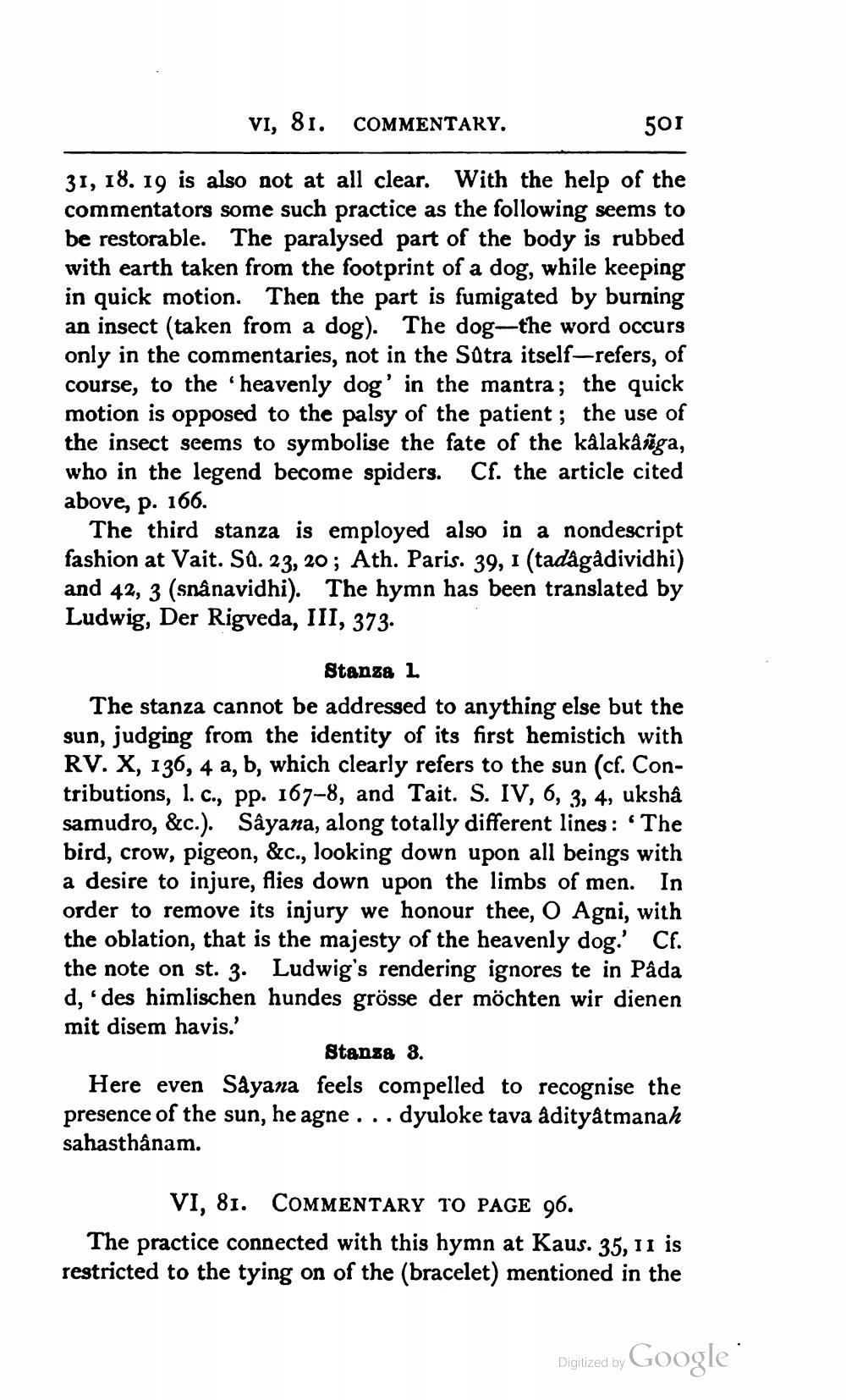________________
VI, 81. COMMENTARY.
501
31, 18. 19 is also not at all clear. With the help of the commentators some such practice as the following seems to be restorable. The paralysed part of the body is rubbed with earth taken from the footprint of a dog, while keeping in quick motion. Then the part is fumigated by burning an insect (taken from a dog). The dog-the word occurs only in the commentaries, not in the Satra itself-refers, of course, to the heavenly dog' in the mantra; the quick motion is opposed to the palsy of the patient; the use of the insect seems to symbolise the fate of the kâlakājēga, who in the legend become spiders. Cf. the article cited above, p. 166.
The third stanza is employed also in a nondescript fashion at Vait. Sa. 23, 20; Ath. Paris. 39, 1 (tadå gådividhi) and 42, 3 (snânavidhi). The hymn has been translated by Ludwig, Der Rigveda, III, 373.
Stanza 1 The stanza cannot be addressed to anything else but the sun, judging from the identity of its first hemistich with RV. X, 136, 4 a, b, which clearly refers to the sun (cf. Contributions, 1. c., pp. 167–8, and Tait. S. IV, 6, 3, 4, uksha samudro, &c.). Sâyana, along totally different lines : 'The bird, crow, pigeon, &c., looking down upon all beings with a desire to injure, flies down upon the limbs of men. In order to remove its injury we honour thee, O Agni, with the oblation, that is the majesty of the heavenly dog. Cf. the note on st. 3. Ludwig's rendering ignores te in Pâda d, 'des himlischen hundes grösse der möchten wir dienen mit disem havis.'
Stanza 3. Here even Sayana feels compelled to recognise the presence of the sun, he agne ... dyuloke tava adityatmanah sahasthanam.
VI, 81. COMMENTARY TO PAGE 96. The practice connected with this hymn at Kaus. 35, 11 is restricted to the tying on of the (bracelet) mentioned in the
Digilized by Google




